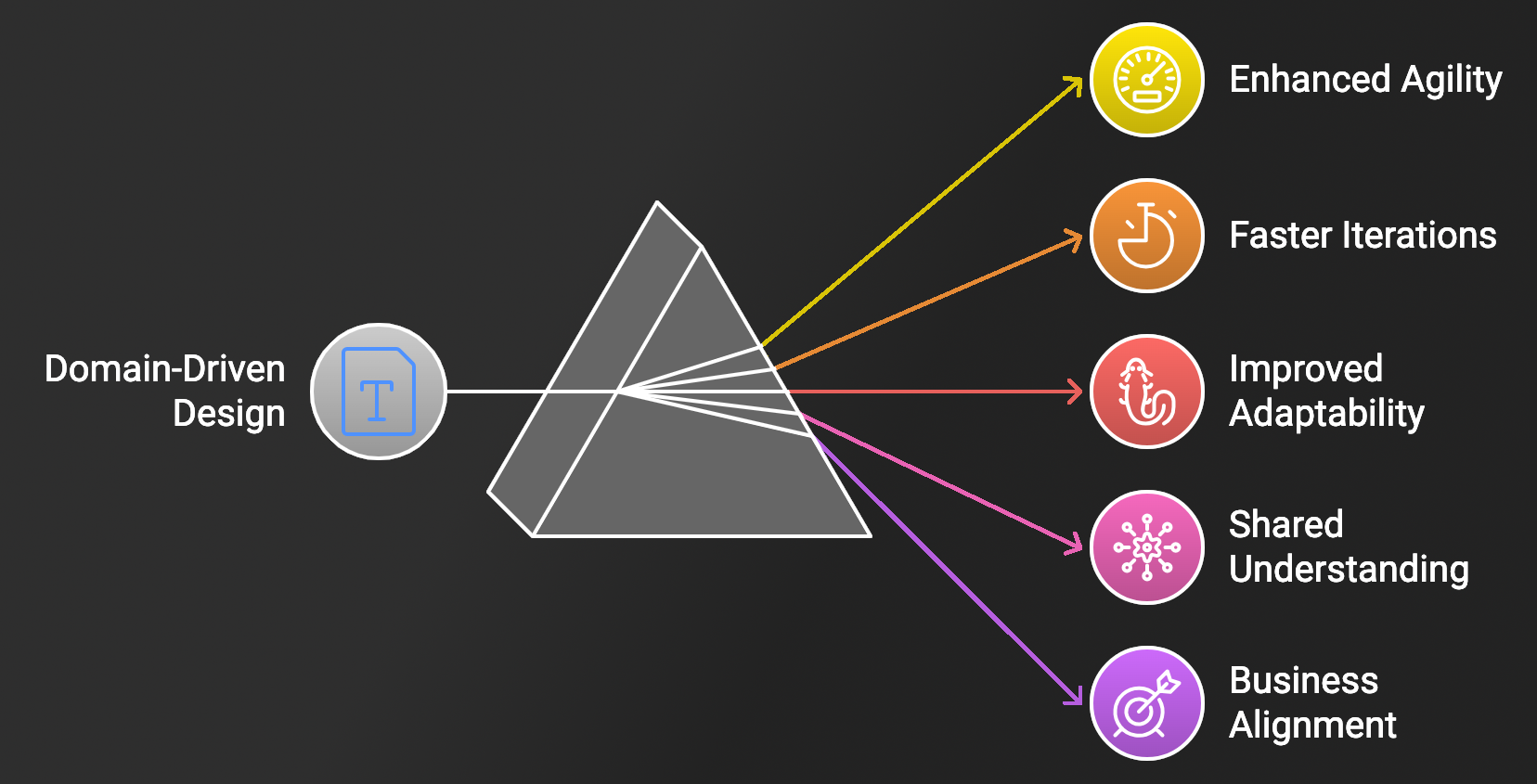- +356 7993 2555
- [email protected]

Understanding Domain-Driven Design (DDD)
Domain-Driven Design (DDD) is an approach to software development that emphasizes the importance of modeling software around the core business domain. By creating a shared understanding of the business domain among all stakeholders, DDD helps ensure that the software system accurately reflects and supports business processes.
Key Benefits of DDD Architecture
Enhanced Agility
DDD architecture fosters agility by enabling teams to adapt their software to changing business needs more effectively. This agility is achieved through a deep understanding of the business domain, allowing for more relevant and timely updates.Faster Iterations
With DDD, businesses can achieve faster iterations by breaking down complex systems into manageable, domain-specific components. This modular approach allows for quicker changes and improvements, reducing the time required to deliver new features.Improved Adaptability
DDD enhances adaptability by ensuring that the software evolves in alignment with the core business requirements. This alignment helps organizations respond more effectively to market changes and emerging business opportunities.Implementing DDD in Your Organization
Building a Shared Understanding
Successful implementation of DDD requires building a shared understanding of the business domain among all team members. This shared knowledge ensures that everyone is aligned with the business goals and can work towards common objectives.Modeling Business Domains
Create domain models that represent key business processes and rules. These models serve as the foundation for designing software that accurately reflects business requirements and supports efficient operations.Aligning Development with Business Goals
Ensure that the development process is closely aligned with business goals by continuously validating the software against the domain model. This alignment helps maintain focus on delivering value and meeting business objectives.Overcoming Challenges with DDD
Complexity Management
While DDD offers many benefits, managing complexity can be challenging. Breaking down the system into smaller, manageable components and using clear domain models can help address this issue.Maintaining Consistency
Ensure consistency across the system by maintaining a unified domain model and keeping communication open between all stakeholders. Regular reviews and updates to the domain model can also help maintain alignment.At Tassei Tech, our Domain-Driven Design (DDD) architecture empowers your business to adapt swiftly to changing requirements and market conditions. By focusing on core business domains, we provide enhanced agility, faster iterations, and improved adaptability. Implementing our DDD solutions helps your organization build flexible and scalable solutions that support rapid responses to change, ensuring that your software development remains aligned with business goals.


